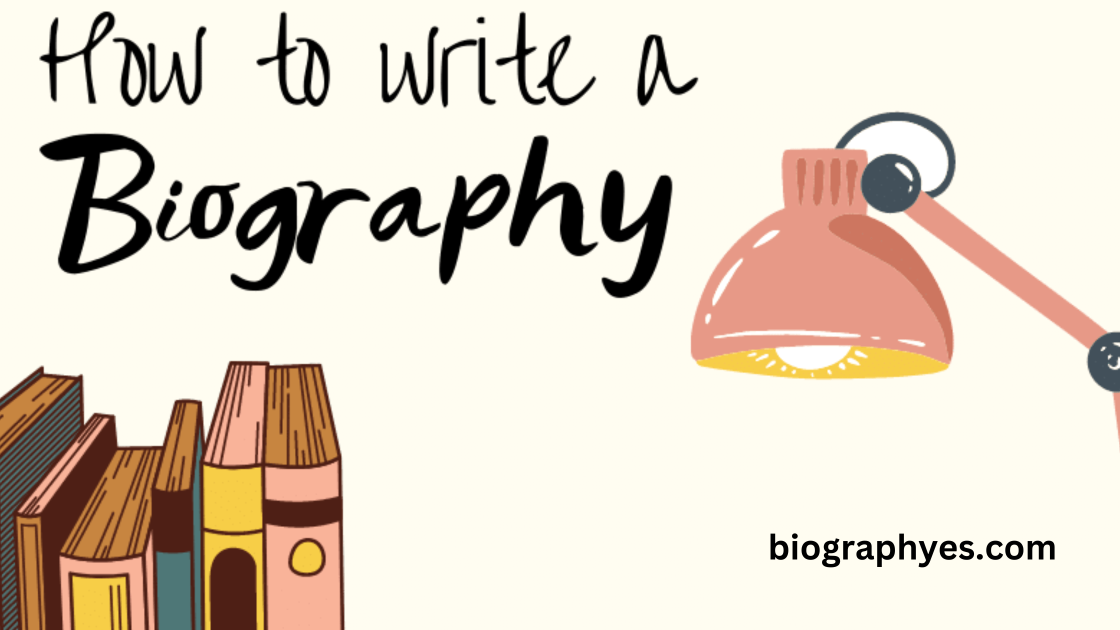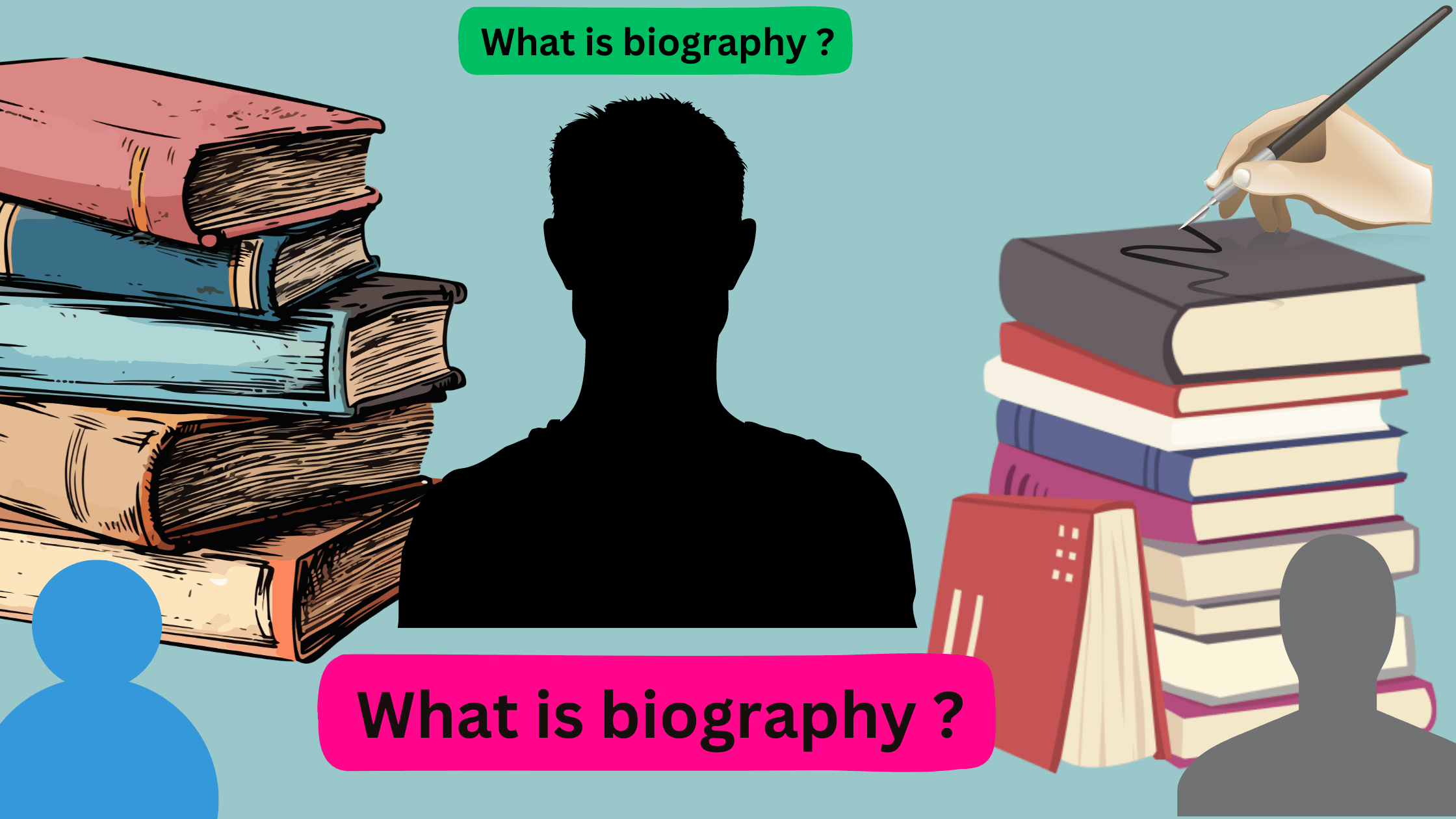How to Write a Biography
Are you fascinated by the lives of extraordinary individuals? Do you want to learn how to create a captivating biography that will transport your readers into the lives of the people you are writing about? Look no further! In this article, we will guide you through the process of writing a biography that will leave a lasting impression.
A well-written biography goes beyond a simple account of someone’s life. It delves deep into their experiences, struggles, and achievements, painting a vivid picture that resonates with readers. Whether you are writing a biography for personal reasons or as part of a professional project, mastering the art of biographical writing is a valuable skill to have.
In this comprehensive guide, we will explore the essential elements of a biography, from conducting thorough research to crafting a compelling narrative. We will also provide you with valuable tips and techniques that will help you create a biography that captures the essence of your subject and engages readers.
Get ready to embark on an exciting journey as we explore the world of biographical writing together. Let’s discover how to bring someone’s story to life in a way that will resonate with readers and leave a lasting impact.
Importance of biographies
Biographies hold a unique and powerful place in the realm of literature and storytelling. They offer readers a window into the lives of extraordinary individuals, allowing us to gain a deeper understanding of the human experience. Through the lens of a well-crafted biography, we can explore the triumphs, challenges, and complexities that shape the lives of those who have left an indelible mark on the world.
Biographies have the ability to inspire, educate, and captivate. By delving into the personal narratives of influential figures, we can gain valuable insights into the historical, social, and cultural contexts that have shaped their journeys. These accounts can inspire readers to pursue their own dreams, overcome obstacles, and strive for greatness, as they witness the determination and resilience of the individuals they are reading about.
Moreover, biographies play a crucial role in preserving and transmitting historical knowledge. They serve as a bridge between the past and the present, allowing us to gain a more nuanced understanding of significant events, movements, and societal transformations. By exploring the lives of those who have shaped the course of history, we can better comprehend the complex forces that have influenced the world we live in today.
Types of biographies
Biographies come in a wide variety of forms, each with its own unique approach and focus. Understanding the different types of biographies can help you determine the most appropriate format for your subject and the story you wish to tell.
One of the most common types of biographies is the chronological biography, which presents the subject’s life in a linear, sequential manner. This format allows the reader to follow the individual’s journey from birth to death, highlighting the key events, milestones, and turning points that shaped their life. Chronological biographies often provide a comprehensive overview of the subject’s life and are particularly useful for capturing the arc of a person’s experiences.
Another popular form is the thematic biography, which organizes the subject’s life around specific themes or aspects, such as their career, relationships, or personal struggles. This approach allows the writer to delve deeper into the complexities and nuances of the subject’s life, exploring how various facets of their existence intersected and influenced one another. Thematic biographies can offer a more in-depth and analytical perspective on the individual’s life and legacy.
In addition to these traditional formats, there are also more specialized types of biographies, such as the collective biography, which examines the lives of multiple individuals who are connected by a shared experience or context. These biographies can shed light on the broader social, political, or cultural dynamics that have shaped the lives of a group of people. Likewise, the autobiographical biography, where the subject writes their own life story, can provide a unique and intimate perspective on the individual’s experiences and self-reflection.
Researching the subject
Conducting thorough and comprehensive research is the foundation of a well-written biography. The depth and quality of your research will directly impact the richness and authenticity of the final product. As you embark on your biographical journey, it’s essential to approach the research process with diligence, curiosity, and an open mind.
Begin by gathering as much primary source material as possible. This may include personal letters, diaries, journals, photographs, and other artifacts that can provide direct insight into the subject’s life. These primary sources offer a first-hand account of the individual’s experiences, thoughts, and emotions, allowing you to capture the nuances and complexities of their story.
In addition to primary sources, delve into secondary sources, such as biographies, autobiographies, historical accounts, and scholarly articles. These resources can offer a broader perspective on the subject’s life, placing it within a larger historical, social, or cultural context. By cross-referencing and synthesizing information from various sources, you can gain a more comprehensive understanding of your subject and identify potential gaps or contradictions in the existing narratives.
As you conduct your research, be mindful of the reliability and credibility of your sources. Carefully evaluate the information you gather, checking for accuracy, objectivity, and potential biases. It’s important to maintain a critical eye and to be willing to challenge or corroborate the claims made by different sources. This attention to detail will ensure that your biography is grounded in factual evidence and presents a balanced and nuanced portrayal of your subject.
Organizing your biography
Organizing your biography is a crucial step in the writing process, as it lays the foundation for a cohesive and compelling narrative. The way you structure your biography can greatly influence the reader’s experience and the overall impact of the story you are telling.
Begin by outlining the key events, milestones, and themes that will shape the structure of your biography.
Consider the chronological flow of your subject’s life, as well as any significant turning points, relationships, or achievements that deserve special attention. This initial planning stage will help you identify the core elements that will guide the development of your narrative.
One effective approach is to divide your biography into distinct chapters or sections, each focusing on a specific aspect of the subject’s life. This can include their early years, education, career, personal relationships, and later life.
By compartmentalizing the narrative in this way, you can ensure that each chapter or section has a clear focus and contributes to the overall understanding of the individual’s life story.
Within each chapter or section, consider incorporating a mix of chronological and thematic elements. This can involve presenting the events of your subject’s life in a linear fashion, while also delving into specific themes or areas of focus that provide deeper insights and contextual understanding. This balance between the chronological and the thematic can create a rich and engaging reading experience for your audience.
As you organize your biography, be mindful of the pacing and flow of the narrative. Ensure that transitions between chapters or sections are smooth and logical, guiding the reader seamlessly through the various stages of your subject’s life. Additionally, consider the use of subheadings, sidebars, or other visual elements to enhance the structure and readability of your biography.
Developing the narrative
Crafting a compelling narrative is the heart of a well-written biography. Your task is to breathe life into your subject’s story, transporting the reader into the world they inhabited and captivating them with the nuances and complexities of their experiences.
Begin by establishing a strong and engaging opening that immediately captures the reader’s attention. This could be a dramatic moment, a pivotal event, or a revealing anecdote that sets the tone for the biography and piques the reader’s curiosity. Your opening should draw the reader in and compel them to continue reading, eager to discover more about the subject’s life.
As you develop the narrative, strive to strike a balance between factual information and vivid storytelling. Weave together the key events, milestones, and turning points of your subject’s life, but do so in a way that brings these elements to life. Utilize descriptive language, dialogue, and sensory details to transport the reader into the historical and cultural context of the time period.
This immersive approach will help the reader forge a deeper emotional connection with the subject and their journey.
Throughout the narrative, be mindful of the pacing and rhythm of your writing. Vary the sentence structure, paragraph length, and overall tone to maintain the reader’s engagement and prevent the biography from becoming monotonous. Strategically place moments of tension, conflict, and resolution to create a sense of narrative drive and propel the reader forward.
Additionally, consider incorporating thematic elements into your narrative, exploring the underlying ideas, values, and motivations that shaped your subject’s life. By weaving these themes throughout the biography, you can provide a more nuanced and insightful portrayal of your subject, offering the reader a deeper understanding of their experiences and the broader societal or historical context in which they lived.
Including key events and milestones
A well-crafted biography should incorporate the key events and milestones that define the subject’s life and contribute to the overall narrative. These pivotal moments serve as the building blocks of the story, providing the reader with a comprehensive understanding of the individual’s journey and the factors that shaped their experiences.
When selecting the key events and milestones to include, consider the significance and impact of each occurrence. Focus on the moments that were instrumental in shaping the subject’s character, decisions, and trajectory. This may include major life events, such as birth, education, marriage, career achievements, or significant personal challenges.
In addition to these larger-than-life moments, don’t overlook the smaller, more intimate details that can add depth and nuance to your subject’s story. Incorporate personal anecdotes, everyday experiences, and subtle shifts in perspective that provide a window into the subject’s inner world. These seemingly mundane moments can often reveal the most poignant and insightful aspects of an individual’s life.
As you weave these key events and milestones into your narrative, strive to provide rich contextual information that helps the reader understand the broader historical, social, or cultural landscape in which they occurred. This contextual framing will not only enhance the reader’s understanding of the subject’s life but also illuminate the broader significance and impact of the events being described.
Moreover, be mindful of the balance and pacing of your narrative. Avoid overwhelming the reader with an endless stream of events and details. Instead, carefully select and prioritize the most impactful and compelling moments, allowing them to shine and resonate with the reader. This selective approach will create a cohesive and engaging biography that leaves a lasting impression.
Adding personal anecdotes and insights
While the factual details and key events of a subject’s life are essential, it is the personal anecdotes and insights that truly bring a biography to life. These intimate glimpses into the individual’s thoughts, emotions, and experiences can humanize the subject and foster a deeper connection between the reader and the narrative.
When incorporating personal anecdotes and insights, strive to select those that provide a unique and revealing perspective on your subject. These could be moments of triumph, struggle, or personal reflection that offer a window into the subject’s inner world. By sharing these intimate details, you can help the reader develop a more nuanced understanding of the individual’s motivations, values, and the complexity of their lived experiences.
Additionally, consider including first-hand accounts or direct quotes from the subject, their family members, friends, or colleagues. These primary sources can add authenticity and emotional resonance to your biography, allowing the reader to hear the subject’s own voice and gain a more intimate understanding of their perspective.
Furthermore, don’t be afraid to explore the subject’s vulnerabilities, flaws, and personal challenges. Presenting a well-rounded and honest portrayal of the individual can create a more relatable and compelling narrative. By acknowledging the subject’s humanity and the complexities of their life, you can foster a deeper empathy and connection with the reader.
As you weave these personal anecdotes and insights into your biography, be mindful of the overall structure and pacing of your narrative. Strategically place these intimate moments throughout the biography, using them to punctuate key events or to provide a counterpoint to the broader historical or social context. This intentional approach will ensure that the personal elements seamlessly integrate with the factual information, creating a cohesive and engaging reading experience.
Editing and revising your biography
The process of writing a biography doesn’t end with the initial draft. Careful editing and revision are essential to refine your work and ensure that it achieves the highest level of quality and impact. Approach this stage with a critical eye, always striving to enhance the clarity, coherence, and overall effectiveness of your narrative.
Begin by carefully reviewing your draft, considering the overall structure, pacing, and flow of the biography. Identify any areas where the narrative may feel disjointed or where the transitions between sections or events could be improved. Make adjustments to the organization and structure, ensuring that the biography follows a logical and compelling progression.
Next, focus on the language and writing style. Scrutinize your word choices, sentence structure, and the overall tone of your narrative. Seek to eliminate any redundancies, awkward phrasing, or overly complicated language that could hinder the reader’s understanding or engagement. Strive for concise, vivid, and engaging prose that brings your subject’s story to life.
As you edit, pay close attention to the factual accuracy of your biography. Double-check the dates, names, and details you have included, cross-referencing your research to ensure that the information you present is reliable and consistent. This meticulous attention to detail will lend credibility to your work and instill confidence in your readers.
Additionally, consider seeking feedback from others, such as beta readers or subject matter experts, who can provide valuable insights and perspectives on your biography. Incorporate their constructive criticism and suggestions to refine your narrative and enhance its overall effectiveness. This collaborative approach can help you identify blind spots or areas that require further development.
Finally, be willing to engage in multiple rounds of editing and revision. The process of refining a biography is often iterative, and each pass through the text can uncover new opportunities for improvement. Embrace this process with patience and a commitment to excellence, as the end result will be a biography that captivates and resonates with your readers.


